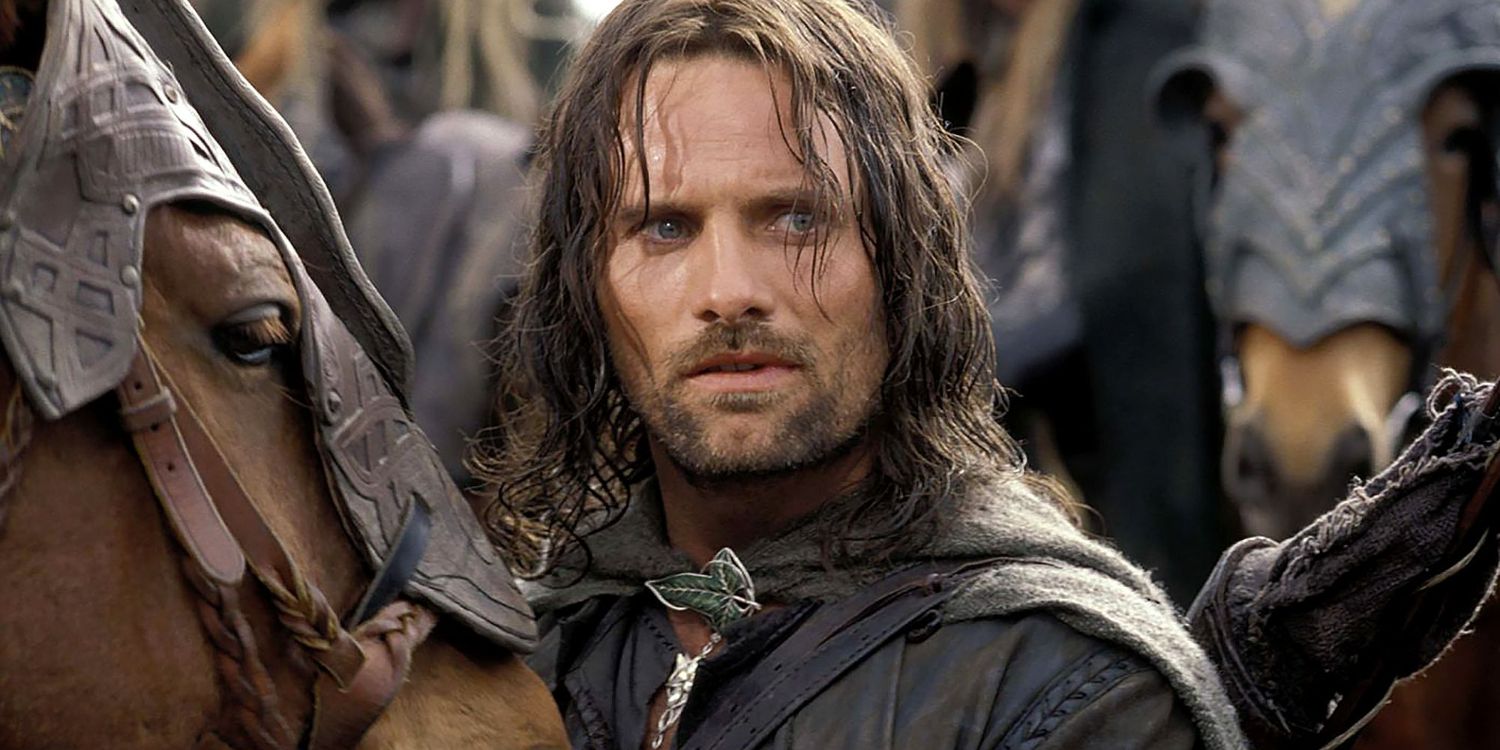
Mortensen’s legendary portrayal was just as memorable as it should have been – writer J.R.R. Tolkien’s Aragorn was a landmark protagonist of the fantasy genre, who would go on to be the prototype for countless warriors and kings in stories to come. Aragorn’s heritage from the western island kingdom of Númenór was never far from the surface of his costume designs, and his alliances with various other characters and factions also shone through. Whatever the case, Aragorn’s wardrobe always told his story eloquently.
How Aragorn’s “Strider” Costume Gives Away His Lord Of The Rings Backstory
Aragorn Was A Battle-Hardened Ranger
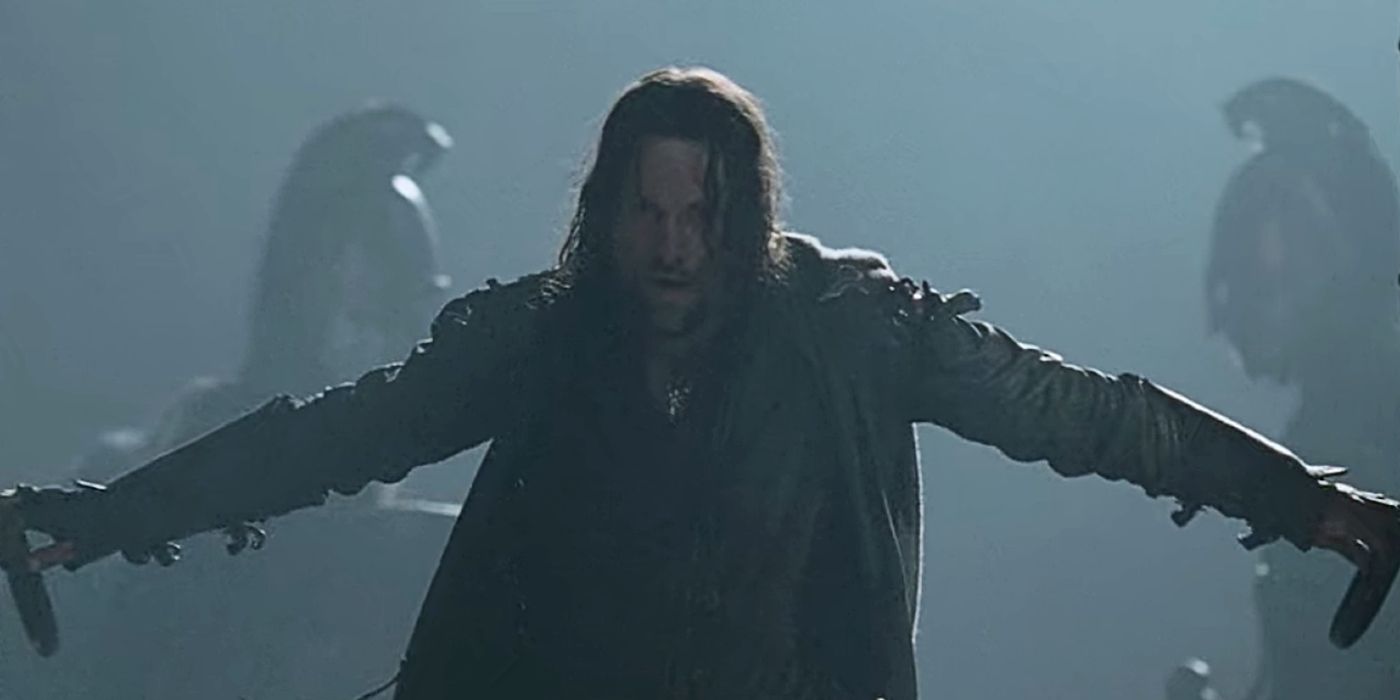
Aragorn’s costume as the Strider that first appeared in The Lord of the Rings: The Fellowship of the Ring spoke volumes about his backstory. Wearing dark green and brown, he was in the medieval version of camo. This allowed him to settle in discreetly to any whereabouts on his journey as a Ranger, patrolling far and wide to keep the residents of Middle-earth safe. Aragorn wore soft leathers that spoke to his need for protection from the elements and protection in battle, with a protective extra piece of leather braiding on one arm of his coat.
Viggo Mortensen expressed his openness to starring in the upcoming Lord of the Rings movie currently known as The Lord of the Rings: The Hunt for Gollum .
In his seminal work The Lord of the Rings, which Jackson adapted for the big screen, pioneering author Tolkien referred to Strider’s “high boots of supple leather that fitted him well.” Built for the outdoors and made to last, these boots were manifested in the movies by costume designer Ngila Dickson. The New Zealand costume designer riffed nicely off one of Tolkien’s funnier Aragorn-related quotes – that Aragorn was “grim to look upon unless he chanced to smile.” His Strider costume was dark and mysterious, reflecting his Númenórean Ranger’s duty.
Aragorn Drops His “Strider” Persona During The Two Towers
Aragorn Starts Riding To War More Openly
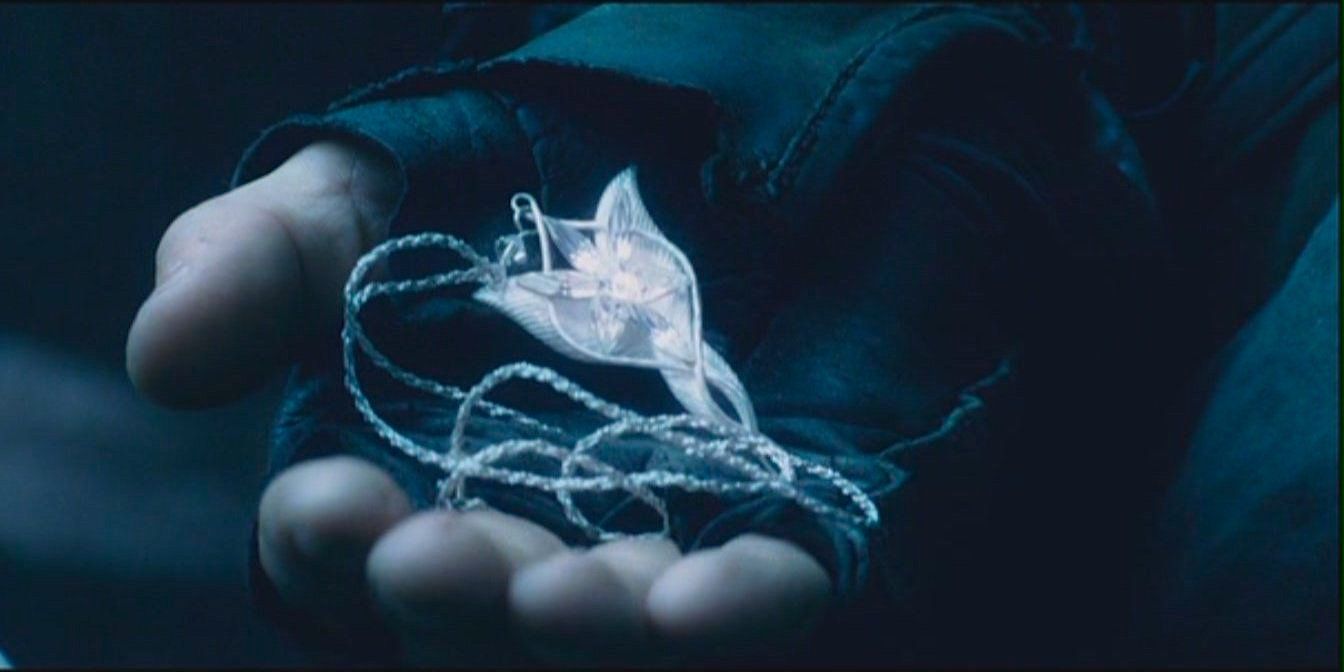
Mortensen’s character evolved throughout Jackson’s trilogy, slowly but surely, and his costume in The Lord of the Rings: The Two Towers told a different story from his previous one. As Aragorn became one of the members of the Fellowship of the Ring, he started his journey from undercover Ranger towards the King. His costumes would manifest these two poles and everything in between. As soon as the first movie, Aragorn started embellishing his outfit with marks of his friends and allies, including the Elven cloak and brooch from Lothlórien. Of course, he had Arwen’s Evenstar necklace from the start.
Seeing him well into The Two Towers, these were a mark of his emergence from the shadows. Aragorn started wearing his Elven heritage on his sleeve – Númenóreans’ long life was attributed to their Elven blood. But this also beckoned in his destiny as something greater than a Ranger. Aragorn’s relationship with Arwen would see him unite the clans of Elves and Men, unlike the other fellowship members wearing the brooch. Aragorn wore Boromir’s bracers after his friend’s death, before adding bolder colors and Rohirrim chain mail in The Two Towers, signifying a newfound openness as a military leader.
The Meaning Behind Aragorn’s “King Elessar” Costume
Aragorn’s Costume Honored His Return As The King
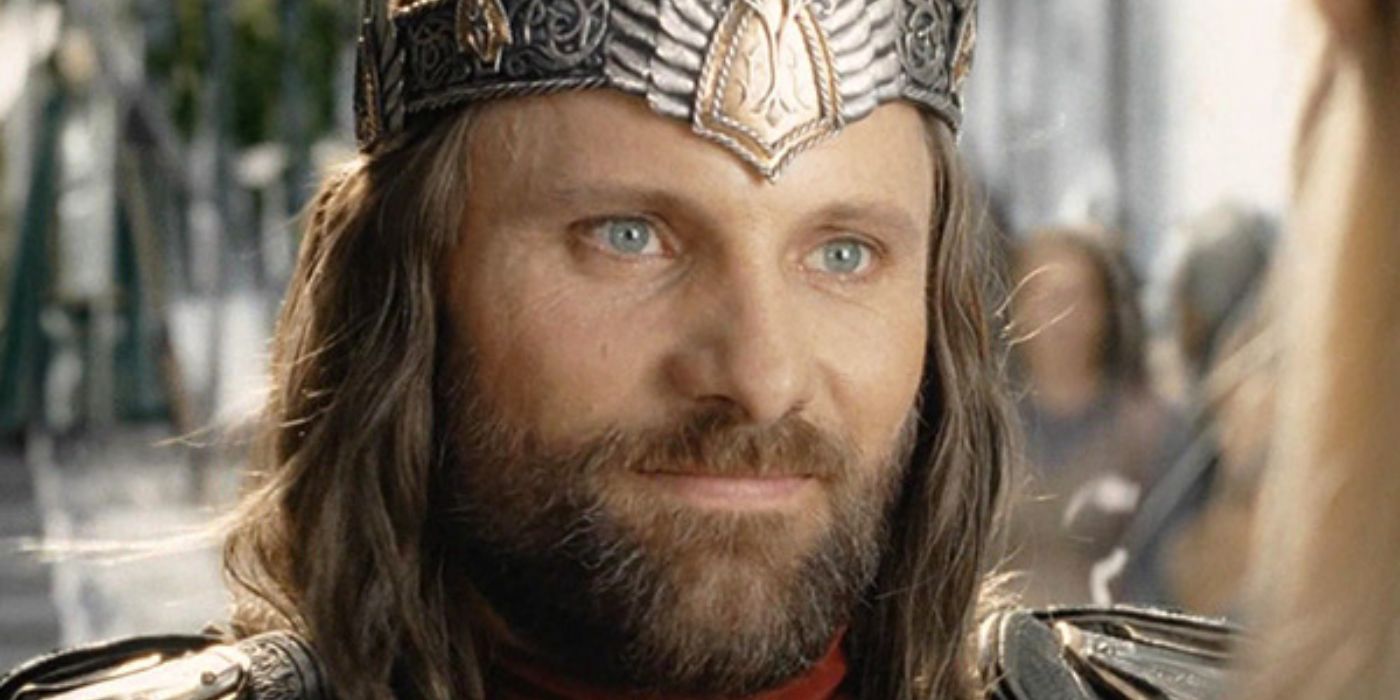
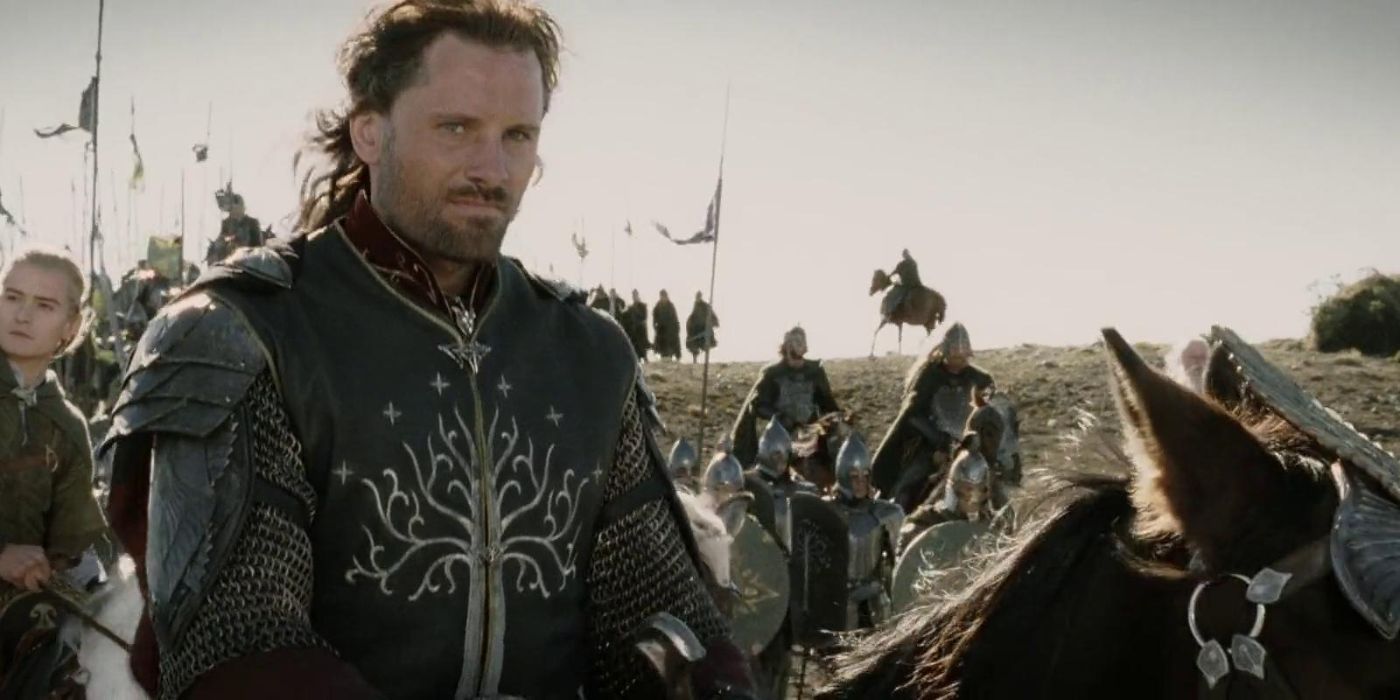
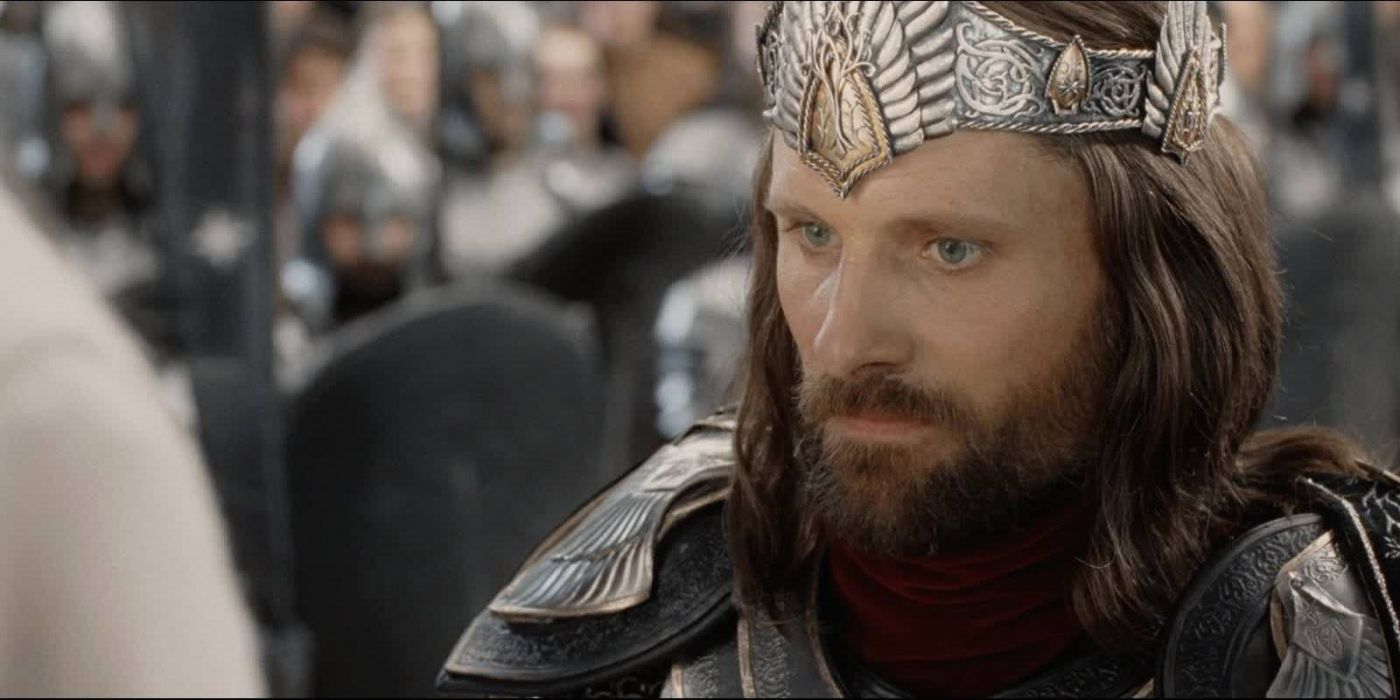
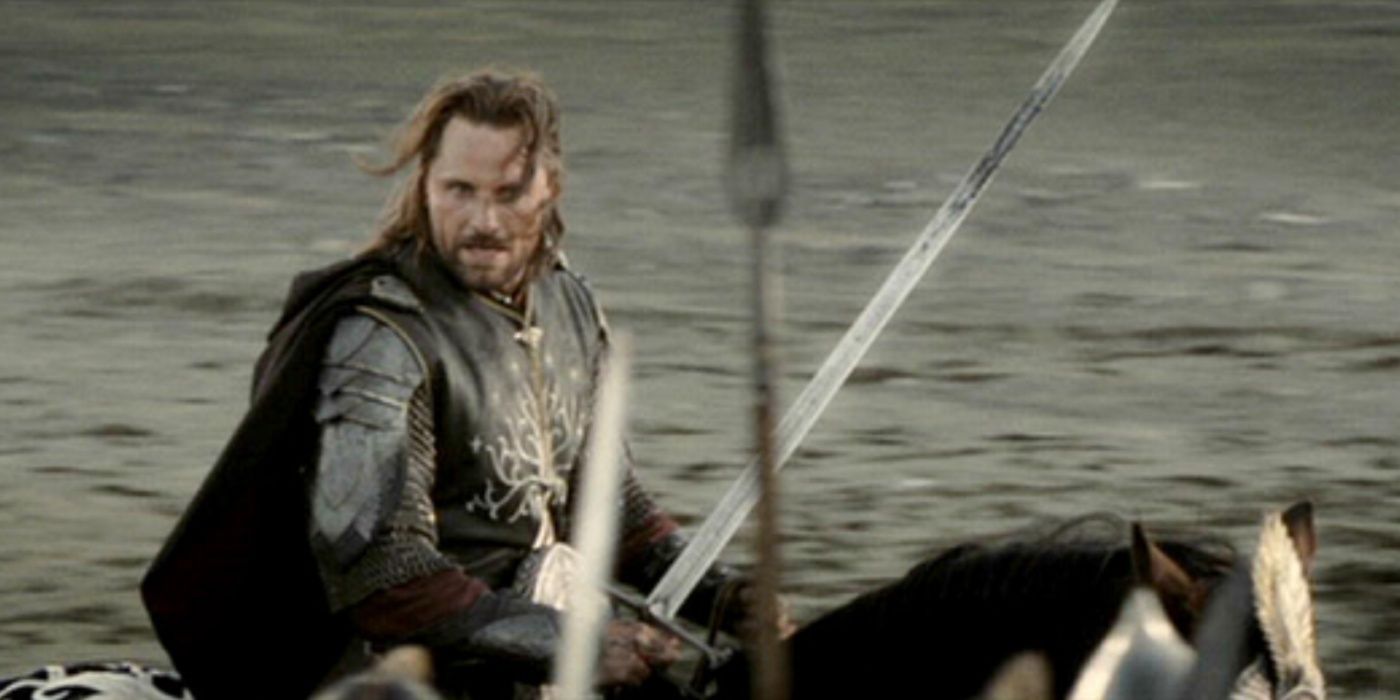
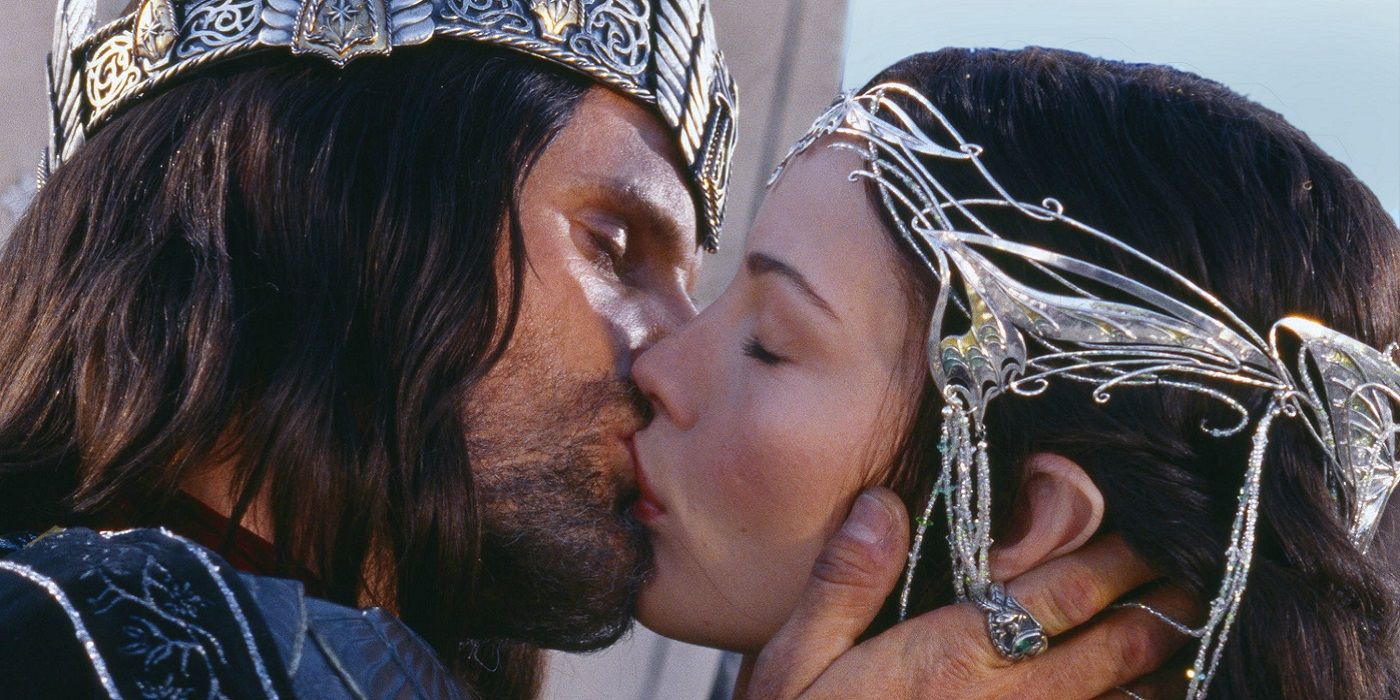





Throughout the third movie in the trilogy, Aragorn continued to manifest his growth and destiny in his costume. Going into The Lord of the Rings: The Return of the King, Aragorn’s Elven association was starting to make its relevance clear. Aragorn was fated to finally fulfill his family’s responsibility to bear the royal duty as the Númenórean line of Isildur. Isildur fled Númenór as many as 39 generations before Aragorn, in the Second Age of Middle-earth, landing in Middle-earth and establishing the Kingdom of Gondor. Aragorn’s Númenórean royalty was leading him to Gondor.
…in The Return of the King , Aragorn had finally dispensed all trace of the shadowy Ranger of the first movie.
Destined to reclaim the crown in Gondor, Aragorn started to more confidently assert his family identity. Proudly wearing the White Tree of Gondor on his chest in The Return of the King, Aragorn had finally dispensed all trace of the shadowy Ranger of the first movie. He boldly proclaimed not just his race, but his intentions, in wearing the White Tree. It served as a subtle political threat to his opposition. Aragorn’s armor also grew in its scope and intricacy, as he grew from Ranger to warrior.
Finally, Aragorn was the archetypal knight in shining armor as the King, returned at last to unite the kingdom of Gondor with the kingdom of Arnor, taking rulership back from the Stewards of Gondor. Aragorn embraced his identity and fate in the gleaming silver armor that he wore at his coronation, along with his circlet. This was very apt – Tolkien described the Captains of the West as “flashing and glinting in the sunrise and rippling like silver.” Silver often symbolized good in Lord of the Rings, with the golden ring its opposite.


